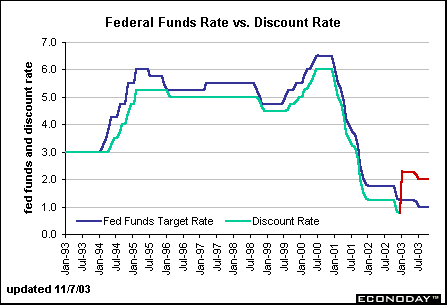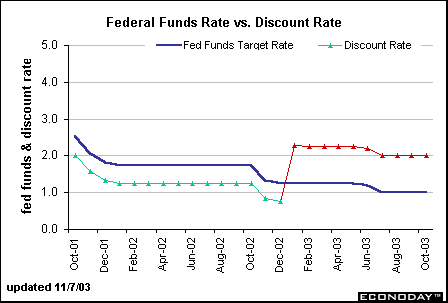 |

Long Term Perspective
In the old days, the discount rate was considered another policy tool assessable to Fed policymakers. They could lower or raise the discount rate as a signal to indicate easier or tighter monetary policy. In the past ten years, the discount rate was typically just 25 to 50 basis points less than the federal funds rate target. This was to allow banks that needed reserves to borrow cheaply from the Fed. However, banks who did borrow frequently from the Fed were considered poor managers of reserves; consequently, most bankers didn't take advantage of discount window borrowing. On January 9, 2003, the Fed instituted a new policy that would encourage discount window borrowing from banks. The old discount rate is no more. Now, the Fed has a primary credit discount rate and a secondary credit discount rate. The primary credit discount rate is set at 100 basis points over the fed funds rate target. In reality, these are two different series. In order to show the old and the new, we kept the old discount rate in the green and the new discount rate is depicted as a red line.

Short Term Perspective
Since the Federal Reserve has changed its policy on discount window borrowing, it has created a primary credit discount rate and a secondary credit discount rate. The primary credit rate is for banks with healthy credit ratings. It is set at 100 basis points over the federal funds rate target. The chart below shows the old discount rate in green (which was 50 basis points less than the funds rate) and the new primary credit discount rate in red.



Fed Funds Rate Target vs. CPI Inflation • Fed Funds Rate Target vs. Discount Rate • Nominal GDP vs. M2 Growth
|
 |